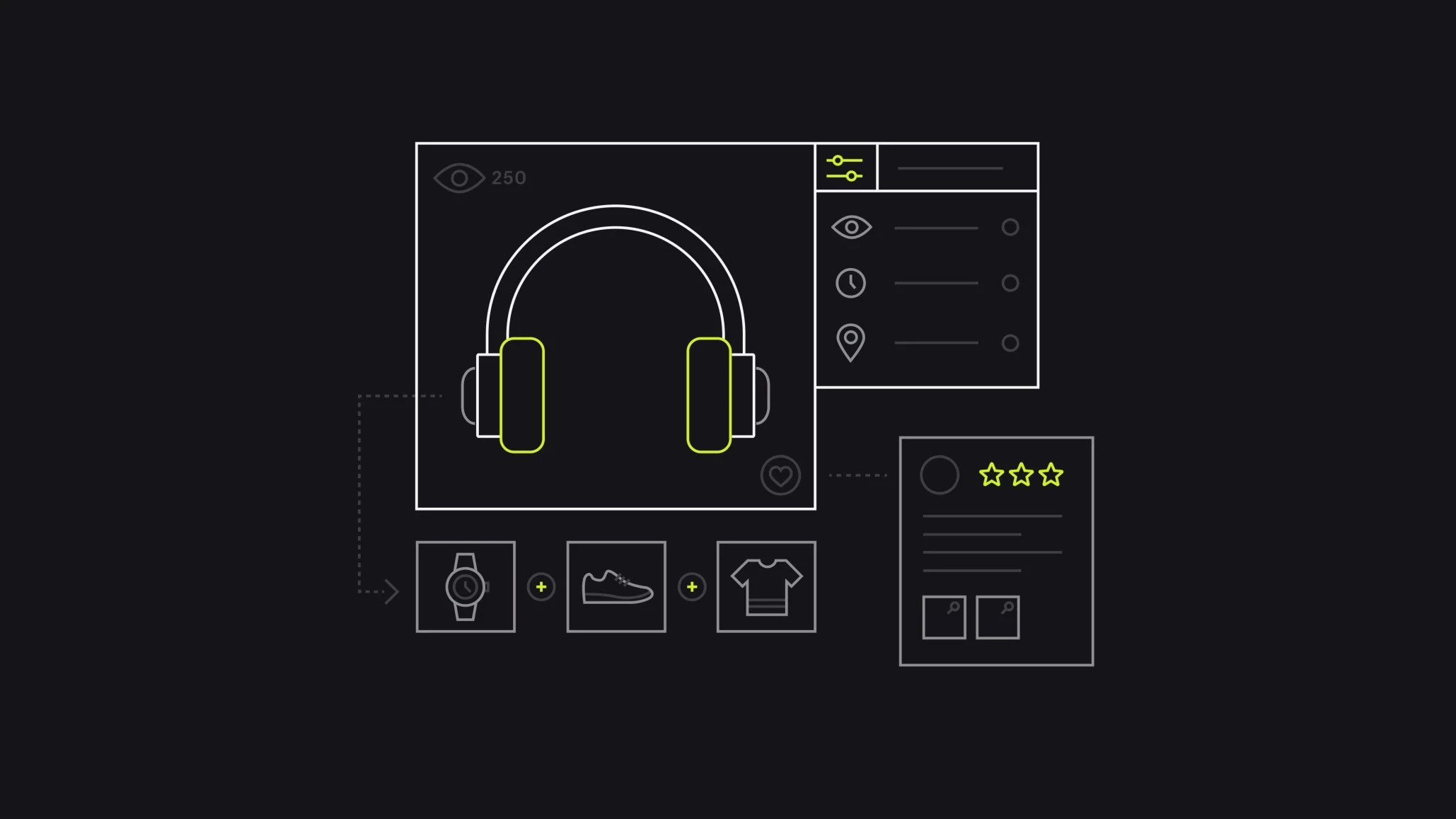Editor's Note: This article was originally published in April 2018 and has since been updated for accuracy and relevancy.
In this article, we’ll examine ecommerce personalization examples proven to sell more, retain customers, and increase lifetime value. We’ll cover:
- How one brand generated 24 million personalized recommendations and an additional 1.6 million clicks on their Shopify Plus-powered site within one year
- How leveraging user-generated content throughout your funnel lifts conversions 166% on average
- How a bestsellers page—personalized by recency, popularity, or geography—can drive a 50% on-page CTR
The most successful brands are the ones that capture their customers’ attention and keep them coming back, and one of the most effective ways to accomplish both is ecommerce personalization.
Personalization programs have been shown to yield 10-15 percent higher conversion rates and 20 percent higher customer satisfaction rates—and customer satisfaction is particularly important since businesses that increase their retention by a mere 5 percent see profit increase between 25 and 95 percent. That type of sustainable growth is also the cheaper option for you as a retailer, since it’s between 5 and 25 percent more expensive for you to get new customers than it is to retain current ones.
Of course, online personalization is easy when your SKU count and customer base are in the low-to-mid thousands.
Unfortunately, when those numbers jump into the hundreds of thousands and beyond, finding a simple yet profitable solution can be overwhelming.
At Nosto, we provide high-volume online retailers with the ability to deliver those one-to-one experiences. From our experience with 3,000 ecommerce professionals in more than 100 countries, I want to share ecommerce personalization examples organized around 7 tactics that won’t break at scale:
- Leverage intelligent product-detail page recommendations
- Show continuous shopping for returning customers
- Create personalized bestseller lists to drive click-throughs
- Integrate user-generated content across your funnel
- Retarget in-session based on behavioral triggers
- Time social retargeting with smart recommendations
- Automate three personalized messaging types
Keep reading to unearth the examples and tactics.
1. Leverage intelligent product-detail page recommendations
Product-detail page (PDP) recommendations show shoppers similar or complementary products to the ones they’re already interested in. You can leverage dynamic up-selling by recommending items that are higher in price but similar in style or by brand. They’re the ones with higher margins and are proven to convert the best.
Cross-selling on PDPs makes it easier to recommend complementary items and inspire online shoppers to increase their cart size, like you can see in this example where Urbanara recommends relevant home accessories that are similar to items in their shoppers’ carts.
Merchant spotlight: Personalizing product recommendations
Pura Vida was the first to leverage Yotpo for customer reviews (a tactic we’ll look more closely at below), and Nosto for personalization. They created two recommendation categories on their product pages:

Within the first year, this combination generated:
- 24 million recommendations and an additional 1.6 million clicks
- 7.9% average recommendation conversion rate
- More than 10% of overall revenue through Nosto’s integration with Shopify Plus
“Shopify Plus is just the best,” says Griffin Thall, co-founder of Pura Vida Bracelets. “It is by far the best ecommerce platform out there and has truly allowed us to sync our operations with vendors, apps and tech partners, as well as provide amazing reporting.”
The most effective PDP recommendations allow shoppers to jump to associated complementary categories. For example, when a shopper on Bandier’s site is viewing a tank top, they’re also shown recommendations of matching shoes and pants.

Similar to continuous shopping, browsing history on the PDP also makes it easy to return to previously viewed items. Not only do PDP recommendations improve the shopping experience for your customers, but they also have been proven to be one of the most successful approaches to increasing conversion rate and average order value.
2. Show continuous shopping for returning customers
“Continue watching” is one of the most powerful features Netflix created. When we saw that, we realized we could apply this tactic to the ecommerce experience. Thus, continuous shopping recommendations was born, and it’s one of the tactics we recommend most to high-growth retailers.
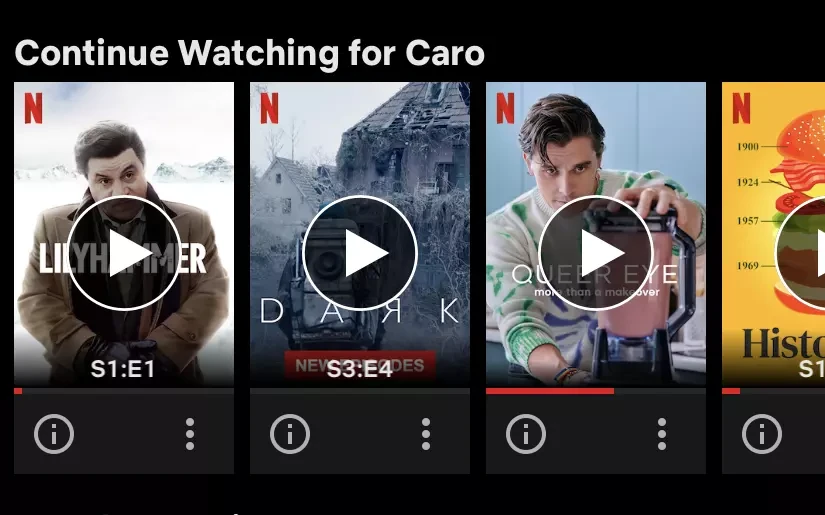
With Netflix, instead of manually searching and scanning through videos, you can pick up right where you left off with a click.
Similarly, this approach remembers your visitor’s selected items and preferences through previous sessions and makes it easier for them to pick up right where they left off. Though this isn’t a very complex algorithm, it’s valuable because it makes it easier for your visitors to buy.
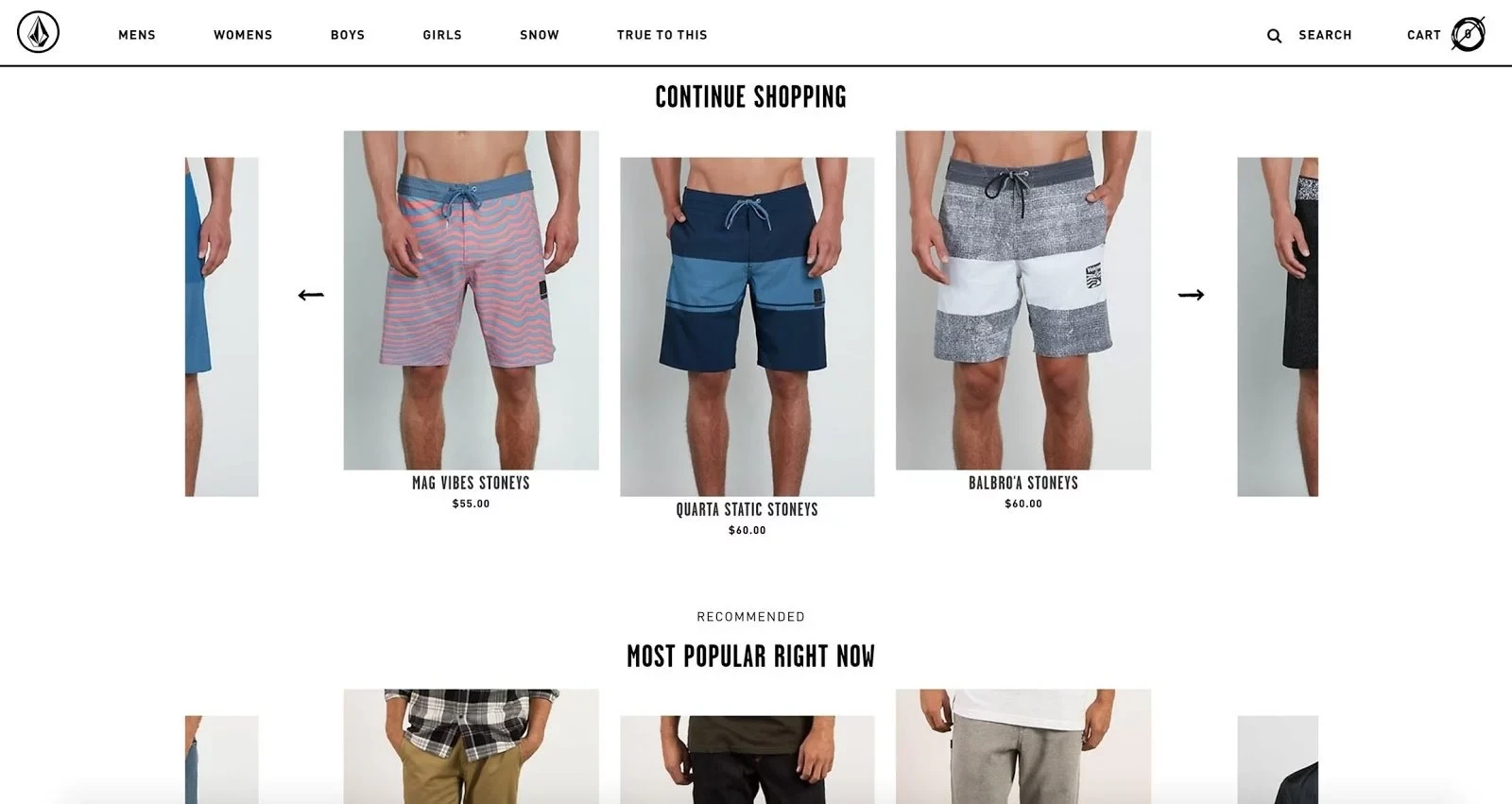
3. Create personalized bestseller lists to drive click-throughs
People are drawn to popular products—think of the magic of the bestseller list in chart-based economies like books and music. We prefer showing the bestsellers with a twist—by adding in the dimension of time. You can show the bestselling products over the last 24 hours, or zoom in the past one hour, depending on how much traffic you have.
When we worked with Campus Protein on this, the brand saw a 50% click-through rate from the best seller page to product pages, which has helped the brand double conversions year over year.

You can definitely get creative with this approach: instead of ranking products by sales, try displaying the most reviewed or segment by location. Showing best sellers by location is especially powerful if you sell fashion in multiple climates or if your store specializes in sports team gear. Your customers from Los Angeles probably aren’t shopping for the same clothing in winter as your shoppers from New York City are. Find what works best for your unique products and customers.
For years, LeSportsac primarily sold their “deluxe” products which are inherently elegant and minimalistic in design. However, when looking at their Google Analytics data, they noticed a large subset of their traffic comes from Hong Kong, where bolder designs and color schemes tend to resonate more with consumers.
By leveraging recommendations labeled as Trending Sellers By Location, they were able to expose a completely unique set of products to their Hong Kong clientele instead of the ones LeSportsac had sold to their US customers:

4. Integrate user-generated content across your funnel
User-generated content (UGC) can bring another dimension to your site. By posting photos, videos, and reviews from customers, visitors get the chance to see your product in real life.
And consumers are just as receptive to making peer-based decisions. In the US alone, 54% of consumers say that they usually learn about new and interesting products from friends and acquaintances. Fortunately, with Shopify Flow, it’s possible to easily integrate all of your tech tools, such as Yotpo and Nosto, to create seamless, inspiring experiences.

Unfortunately, most businesses stop short of integrating UGC throughout their onsite funnel, limiting its use to rating on product-pages or shares on social media.
What are top-brands doing instead?
SeaVees makes UGC (collected from Instagram) prominent on their homepage and PDPs by linking directly to a curated collection of shoppable posts, many of which are submitted by customers through SeaVees branded hashtag:
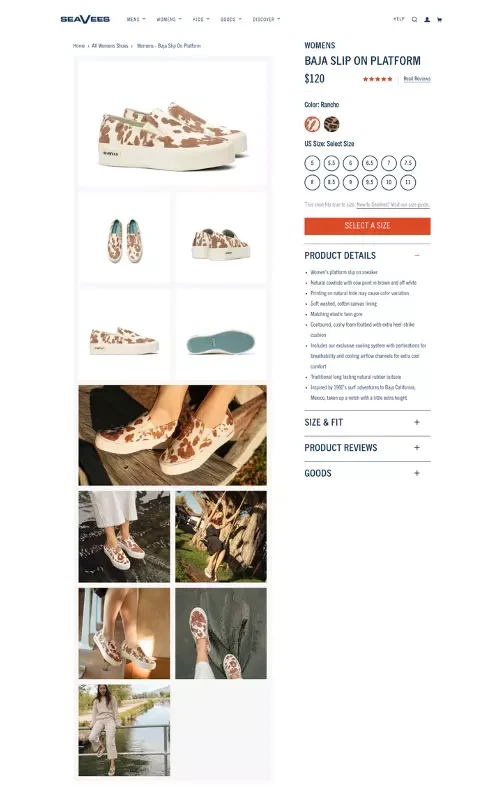
Similar to Seavess’ use of UGC, Skinnydip London displays Instagram images on their homepage from their loyal shoppers with a Shop the Gram' headline:

Campus Protein doubles up on UGC and customer advocacy with some of their high-demand products. For example, on the PDP promoting Bang Energy Drink, they first display a carousel of Instagram-inspired UGC under the product image:

As you scroll further down the page, you’ll also find a Youtube video that features a more engaging spin on the traditional product review:
5. Retarget in-session based on behavioral triggers
Off-site retargeting can be expensive. Thankfully, on-site interstitials can be a great alternative. The key is to be intuitive, not intrusive, with your popups.
You can do this by timing or triggering your popup offers to match each visitor’s in-session behavior. You can trigger these pop-ups through automation based on characteristics like number of sessions, cart value, and browsing behavior (both historical and real time).

It’s a good idea to offer first-time visitors exclusive discounts and promotions in exchange for their email addresses, like in the example below from Urbanara. Once someone adds items to their cart, you can offer tiered discounts to drive up average order value.

True Vintage uses an interesting alternative to discounts across the board—free shipping with a pricing threshold. In this example, the brand offers free shipping for all U.K. orders over £150:
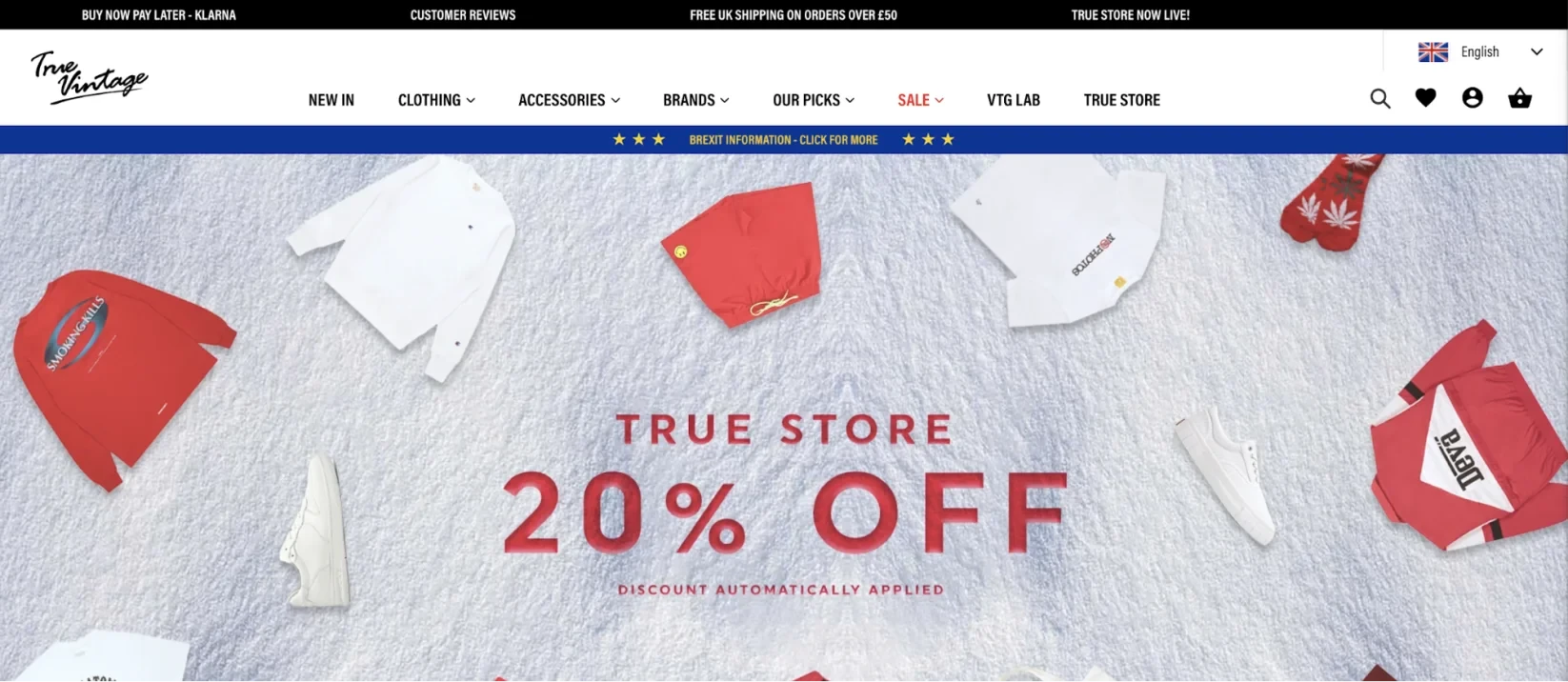
Another great popup option is to re-engage returning visitors with reminders of what they’ve browsed (but never purchased) in order to drive them towards checkout. Bandier deploys a popup for returning visitors that displays recommendations based on their previous browsing behavior:

6. Time social retargeting with smart recommendations
Even if a visitor leaves your site, there are ways to get their attention back through retargeting on social media. In order to make this approach successful, you have to choose your timing wisely.
One of the more advanced forms of retargeting is granulated retargeting. The value of a site visitor declines the longer they’ve been away from your site, so you can save a lot on ad spend by layering your retargeting as their value declines. You can also shorten your retargeting period to 7-14 days so that you’re engaging customers when they’re most likely to still convert.
It’s also important to be mindful of how you’re approaching these shoppers: whether it’s with products that are relevant to their previous purchases or simply by reminding them of your unique selling proposition in a fun way.
By using an A.I.-powered tech tool, you can re-target shoppers at just the right time to avoid having them forget about you or buying from a competitor.
One fun way of staying in front of your shoppers is by combining your retargeting ad with a boosted video to remind your customers why they should buy from you rather than a competing brand - a tactic Chubbies deploys:

7. Automate three personalized email and SMS types
If an online shopper shares their email address or mobile number with you your brand has another way to directly engage and convert them. By utilizing these two avenues of reengaging customers, you can reach out no matter where your customers are, which helps keep your company at top of mind.
So let’s delve into three messaging techniques that get their attention:
Abandoned cart messaging
Optimizing your checkout experience is a necessary step to reducing abandoned carts, but you’ll never eliminate them altogether. For example, many shoppers get distracted and leave ecommerce sites with items still in their cart.
When this happens, you can jog their memory with an abandoned cart email. Morvélo sends customers an email containing items they left in their cart to encourage them to come back and finish the purchase.

You can also use this as a way to catch visitor’s attention. For example, Dope displays a pop up after a visitor adds an item to their cart:
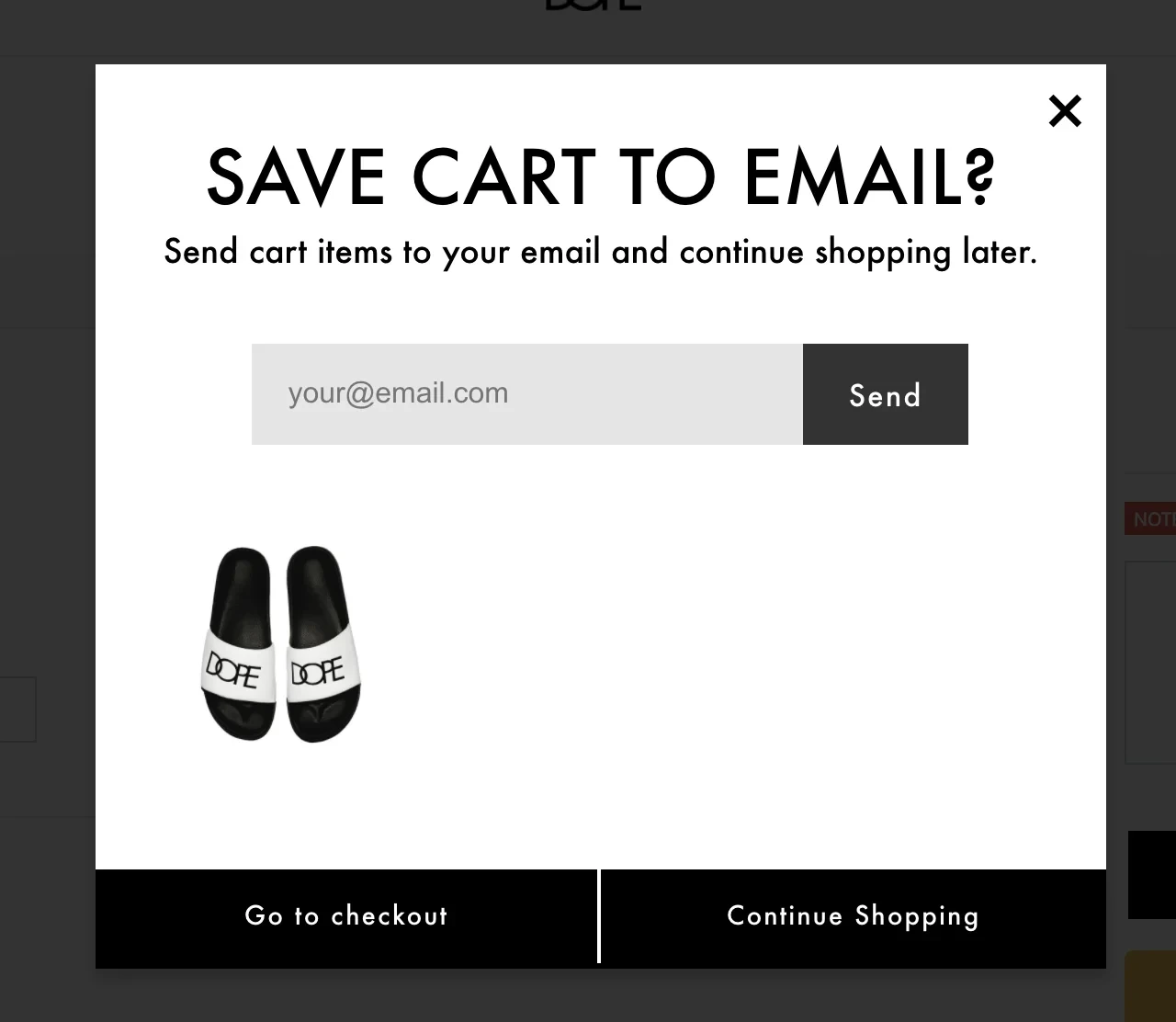
“We miss you” messaging
If a shopper forgets about their cart, you can nudge them with a kind email. Supporters Place sends emails to re-engage visitors and announce new, exciting, products to remind the visitor of what they’d looked at in the past.
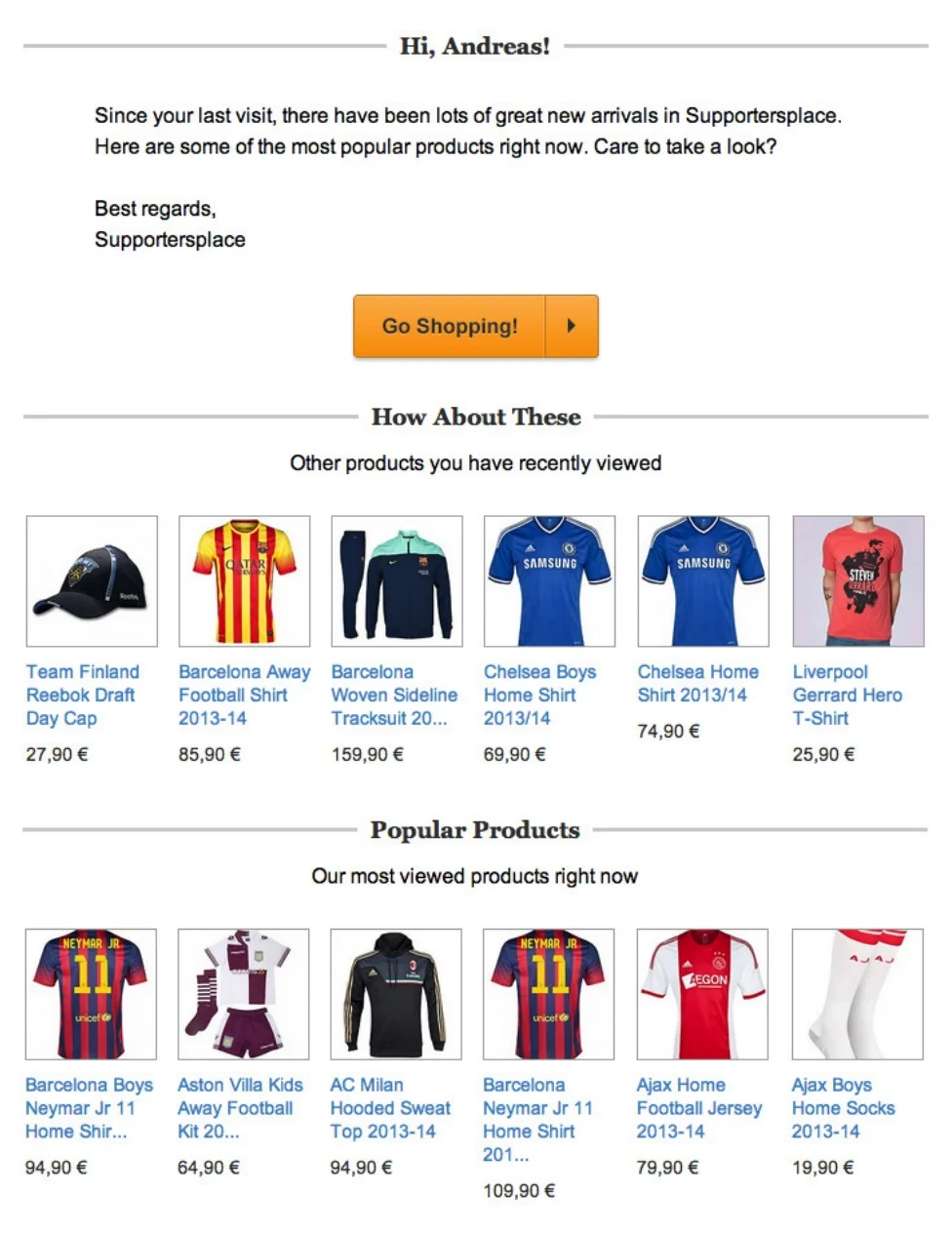
Order follow-up messaging
The checkout is just the beginning of your relationship with a buyer. Check in with buyers after purchase and provide customized product recommendations based on their previous orders. Here’s how ergoPouch does it:

Learn more: 10 omnichannel examples
Final thoughts
Personalization sets your brand apart from others and creates a relationship between your business and your customers. Shopify Plus Certified Apps and Service Partners help brands build experiences that build customer engagement resulting in a sustainable, successful future for your business. If you’d like some more inspiration for creating your customer experiences, check out these personalization examples.
